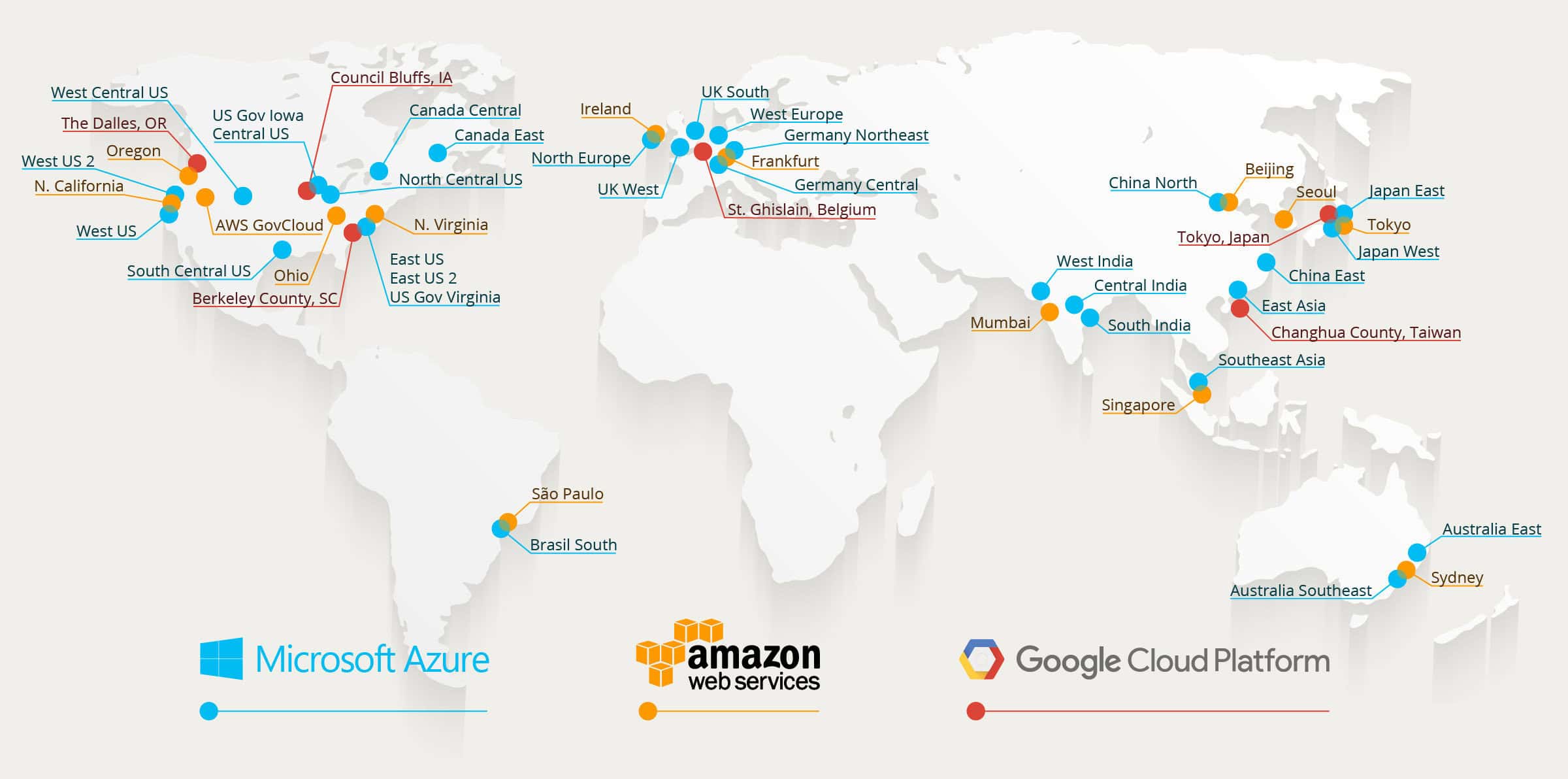
The Facts About Cloud Computing Security and Management
As cloud computing continues to evolve, understanding the underlying factors of data security and management has become crucial. This blog explores key aspects of data location, security, compliance, and trends shaping the future of cloud storage.
What Does ‘Data’s Physical Location’ Mean in Cloud Storage?
Data’s physical location refers to the actual geographic location of the servers where cloud data is stored. While the term “cloud” often suggests a borderless storage network, Cloud Service Providers (CSPs) like Amazon Web Services (AWS), Microsoft Azure, and Google Cloud Platform physically host data in specific regions/countries. These Data Centers are distributed globally to optimise performance, ensure data availability, and comply with local laws to where the data is located, not necessarily to the laws for where the business is registered/conducted.
Factors Cloud Providers Consider When Choosing Data Locations
When selecting the physical sites for data centres, CSPs evaluate various factors:
- User Preferences: Many providers allow customers to choose their preferred regions for storing data.
- Regional Resources: Some services are region-specific due to available resources.
- Legal Constraints: Laws like the EU’s General Data Protection Regulation (GDPR) and the U.S. Health Insurance Portability and Accountability Act (HIPAA) dictate data storage requirements.
- Latency Optimisation: To reduce response times, data is stored closer to end users.
Why Data Location Matters
Knowing where data is stored isn’t just technical know-how, it impacts business, security, compliance, and performance.
1. Data Security
Physical security measures like guards, surveillance, and restricted access vary by region and provider. Knowing the data’s location helps ensure it adheres to high-security standards.

Public Cloud Data Centre Location Map
2. Data Sovereignty and Compliance
Regulations like GDPR in Europe require data to be stored and processed within specific jurisdictions. Storing data locally minimises the risk of non-compliance.
3. Performance and Latency
Latency issues arise when data must travel long distances. For instance, a user in Australia accessing data from London will experience delays. Placing data closer to users or using replication reduces such delays which is why localised Data Centres and network latency are important.
4. Can Users Specify the Location of Their Cloud Data?
Yes and no, most cloud providers allow customers to select data storage regions but not countries.
- AWS: Customers can choose specific regions.
- Google Cloud Platform: Offers single-region and multi-region options.
- Microsoft Azure: Provides regional flexibility for data storage and exchange.
This customisation empowers users to align storage decisions with latency, compliance, and security needs.
5. Monitoring Data Location
Cloud providers offer tools for users to view and manage their data’s location:
- Dashboards: Platforms like AWS and Azure display data storage regions (but not countries) in user interfaces.
- Support Teams: Providers offer assistance to clarify data location and configuration options.
For security reasons, most providers disclose only general regions, not exact cities.
6. Trust and Transparency Among Cloud Providers
Transparency builds trust. Reputable CSPs disclose the following:
- Data Centre Locations: General regions or countries.
- Certifications: Compliance with standards like ISO/IEC 27001 and SOC 2.
- Security Policies: Documentation of physical and digital safeguards.
Providers also conduct independent audits to verify adherence to international standards.
7. The Role of Data Replication
Data redundancy is a cornerstone of cloud reliability. By replicating data across multiple locations, providers enhance availability and safeguard against outages. While cross-region solutions are costlier, they improve performance and resilience though compromising on data location security/compliance.
8. Hybrid and Multi-Cloud Solutions: Enhanced Data Control
Hybrid and multi-cloud strategies empower organisations to balance control and flexibility:
- Hybrid Solutions: Sensitive tasks can remain on-premises or in a colocation data centre, while less-critical tasks move to public clouds.
- Multi-Cloud Strategies: Using multiple CSPs ensures compliance with regional regulations and avoids vendor lock-in.
9. Emerging Trends in Cloud Data Storage
Key trends shaping the future of cloud storage include:
- Edge Computing: Processing data closer to the user to minimise latency.
- Data Sovereignty Regulations: Governments enforce stricter localisation rules.
- Sustainable Operations: Providers increasingly adopt renewable energy to reduce the environmental impact of Data Centres.
In Summary…
Why Data Location Matters – Do you know which country your business data is kept?
The question, “Where is my cloud data stored?” is multifaceted. Security, compliance, latency, and trust are all influenced by data location and the compliance of safeguarding this. Understanding these dynamics ensures better decision-making and fosters confidence in cloud solutions.
When assessing a CSP (and Data Centers in some cases), consider their data location policies, compliance certifications, and redundancy measures. By doing so, individuals and businesses can harness the benefits of cloud storage while safeguarding their data and meeting regulatory requirements. Fixed costs are advertised as a fixed operating cost though this isn’t often the case as we are seeing with Cloud Repatriation being at the forefront of most businesses in 2025 due to spiralling costs within Cloud services like backup and DR for example.
Data sovereignty has become increasingly critical for UK businesses of all sizes, across all sectors. This growing importance stems from heightened concerns over data security, the need to protect sensitive information, and adherence to stringent legal and regulatory frameworks, such as UK GDPR.
Enterprises are now under pressure to ensure that data is stored and processed within national or regional boundaries to comply with jurisdictional requirements. Failure to do so not only risks severe penalties but can also erode consumer trust, a critical asset in today’s digitally driven economy where trust is harder to form with limited interactions with personnel at cloud only organisations.
Coupled also with the rise in cyber threats and cross-border data transfers, companies are prioritising sovereign cloud/colocation solutions and localised infrastructure. These measures aim to bolster compliance, minimise risk exposure, and safeguard operational resilience in an increasingly complex regulatory landscape as well as self cost management.










